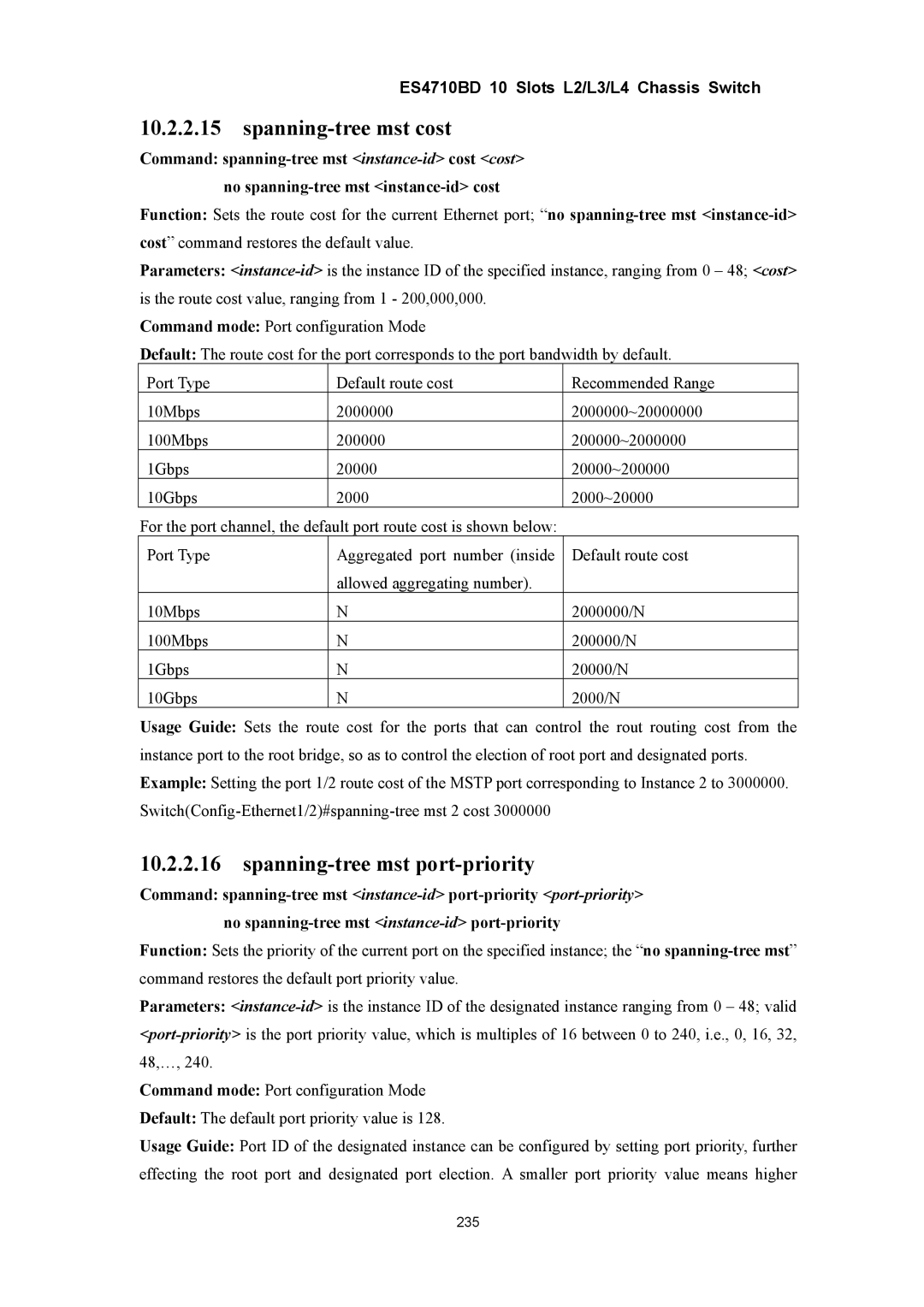ES4710BD 10 Slots L2/L3/L4 Chassis Switch
10.2.2.15spanning-tree mst cost
Command:
Function: Sets the route cost for the current Ethernet port; “no
Parameters:
Command mode: Port configuration Mode
Default: The route cost for the port corresponds to the port bandwidth by default.
Port Type | Default route cost | Recommended Range |
10Mbps | 2000000 | 2000000~20000000 |
100Mbps | 200000 | 200000~2000000 |
1Gbps | 20000 | 20000~200000 |
10Gbps | 2000 | 2000~20000 |
For the port channel, the default port route cost is shown below: |
| |
Port Type | Aggregated port number (inside | Default route cost |
| allowed aggregating number). |
|
10Mbps | N | 2000000/N |
100Mbps | N | 200000/N |
1Gbps | N | 20000/N |
10Gbps | N | 2000/N |
Usage Guide: Sets the route cost for the ports that can control the rout routing cost from the instance port to the root bridge, so as to control the election of root port and designated ports. Example: Setting the port 1/2 route cost of the MSTP port corresponding to Instance 2 to 3000000.
10.2.2.16spanning-tree mst port-priority
Command:
no
Function: Sets the priority of the current port on the specified instance; the “no
Parameters:
Command mode: Port configuration Mode
Default: The default port priority value is 128.
Usage Guide: Port ID of the designated instance can be configured by setting port priority, further effecting the root port and designated port election. A smaller port priority value means higher
235
